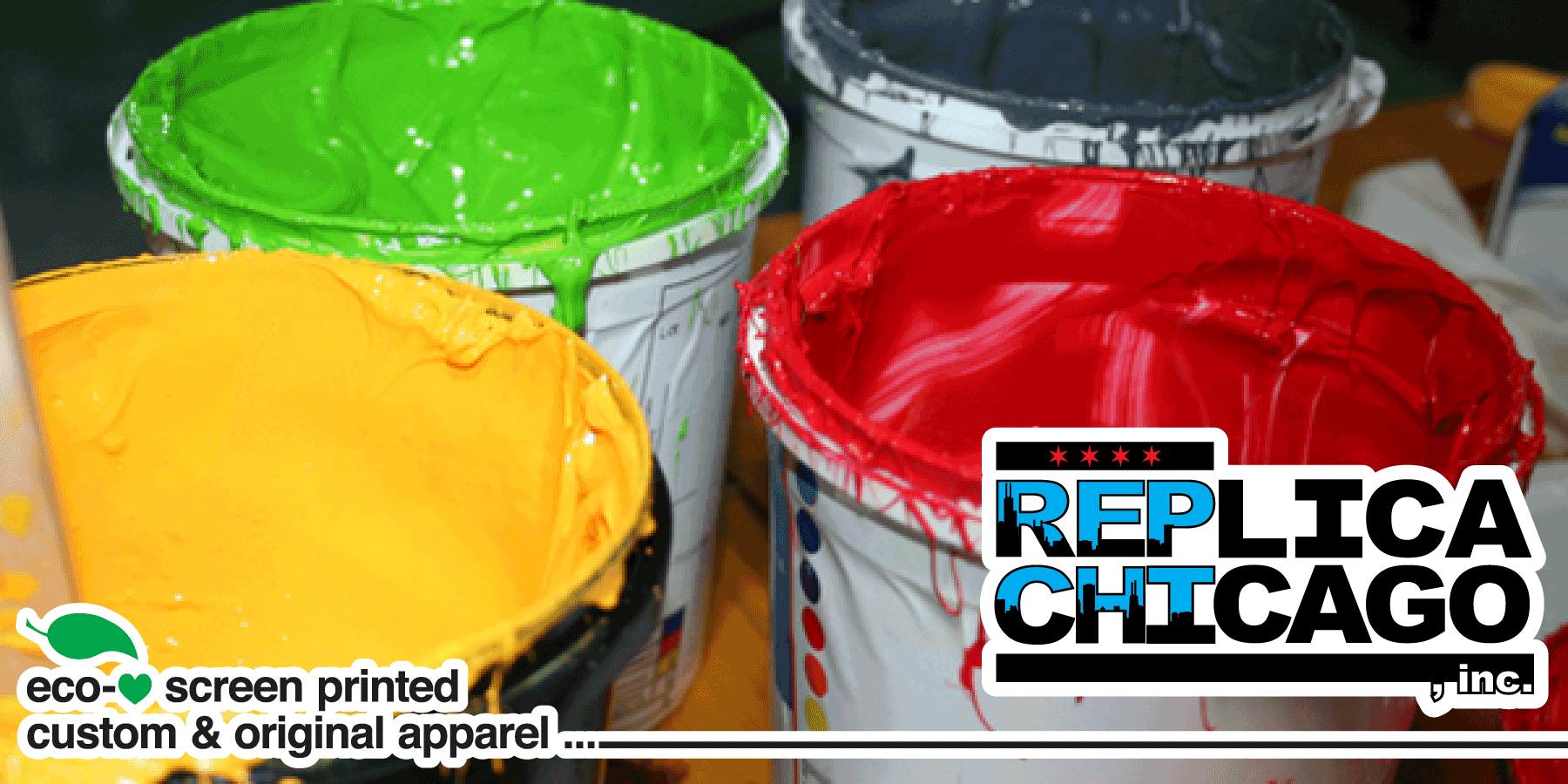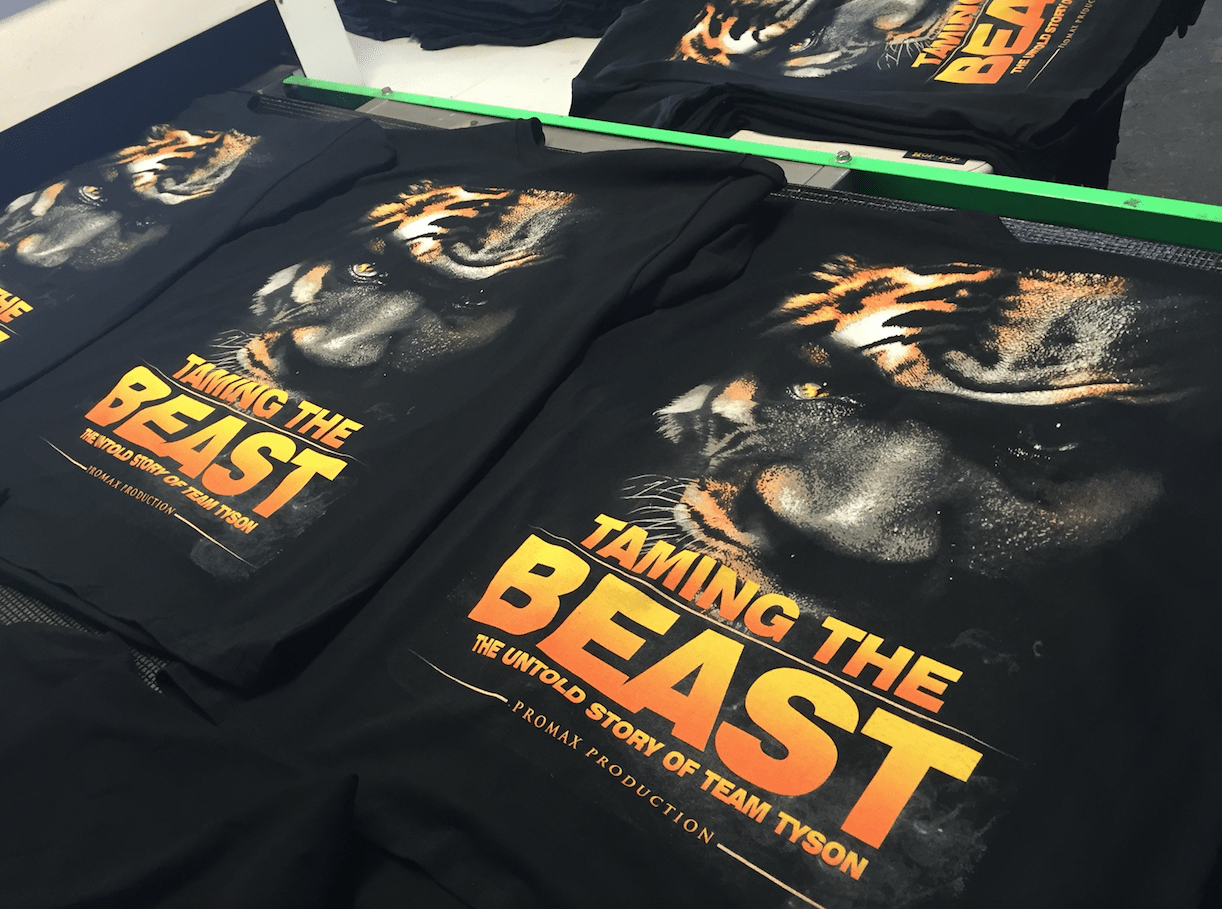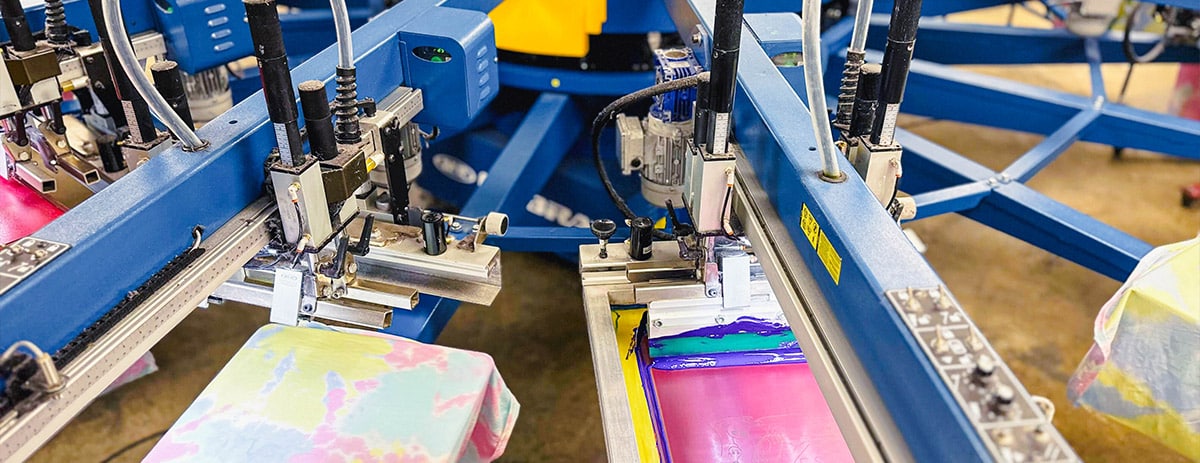Screen Printing Uncovered: Every Little Thing You Need to Learn About Tee and Garment Printing Techniques
Screen printing is a fascinating technique that combines art with method, supplying countless opportunities for creative thinking. All set to check out the essential components that make display printing an art type?
The Basics of Display Printing: How It Functions
When you plunge into display printing, you'll uncover it's both a science and an art. At its core, screen printing includes developing a stencil, or screen, that permits ink to pass via just in certain areas.
Placement the screen over the textile, then make use of a squeegee to push ink with the display onto the garment. Each action is important, and understanding them will raise your screen printing skills, transforming straightforward garments into distinct, meaningful pieces.
Sorts Of Display Printing Methods
When you comprehend the fundamentals of display printing, it's time to check out the different techniques that can elevate your layouts. One preferred method is conventional screen printing, where ink is pushed through a stenciled screen.
If you're going for great information, consider discharge printing. This strategy gets rid of dye from the fabric, leaving a soft, classic look. Another alternative is plastisol printing, recognized for its resilience and vibrant colors, making it a favored for several brands. Ultimately, trying out halftone printing to produce gradient impacts and complex styles. Each method has its special charm, so do not wait to try them out to locate what fits your style best!
Essential Tools for Screen Printing
To attain sensational lead to screen printing, having the appropriate devices is fundamental. You'll require a tough screen printing structure, which holds the mesh that moves your design onto the garment. Next, spend in top notch squeegees; these are vital for using ink uniformly throughout the display. You'll also call for a good exposure device to develop your screens, as well as a washout cubicle for cleaning them after use. A reputable heat resource, like a conveyor clothes dryer or heat press, is important for treating your prints to guarantee durability. Don't fail to remember a proper work space, furnished with tables and storage for your materials. Lastly, safety gear, such as masks and handwear covers, will certainly maintain you safe from chemicals and inks. With the right tools, you'll be well on your method to creating professional-quality prints.
Choosing the Right Inks and Products
When picking inks and products for screen printing, you need to take right into account the kind of ink that works best for your project. Think of fabric compatibility to ensure your layouts look last and terrific long. Discover green ink alternatives to make your printing procedure extra lasting.
Kinds Of Screen Inks
Selecting the right screen ink is important for accomplishing vivid, resilient prints that satisfy your task's needs. There are numerous kinds of display inks to analyze. Specialty inks, such as metal or glow-in-the-dark, can add distinct results to your layouts.

Fabric Compatibility Factors To Consider
Understanding textile compatibility is important for achieving high-quality screen prints, particularly because various materials react uniquely to different inks. Always evaluate your inks on sample fabric to ensure they adhere effectively and maintain shade honesty. In addition, keep in mind that material weight and texture can affect the final result, so picking the appropriate ink and material combination is essential for your task's success.
Eco-Friendly Ink Options
Environment-friendly inks are coming to be a prominent option for screen printers who desire to minimize their environmental effect while maintaining quality. When choosing inks, consider water-based inks, which are much less damaging and much easier to tidy up compared to traditional solvents. These inks bond well with textiles, providing dynamic results without harmful chemicals. You may additionally check out eco-solvent inks that utilize less unstable natural substances (VOCs), making them a more secure alternative for both your health and wellness and the world.
Additionally, search for inks made from sustainable resources, such as soy or vegetable-based choices. By selecting the appropriate inks and materials, you'll not only produce sensational styles however additionally add to an extra sustainable printing procedure. Make the button, and your prints will show your dedication to the setting!
Preparing Your Layout for Screen Printing

Submit Layout Requirements
To guarantee your design looks vivid and sharp on fabric, you'll require to pay close interest to file style needs for screen printing. Begin with vector data like AI or EPS, as they can be scaled without shedding quality. If you utilize raster photos, choose high-resolution files, such as TIFF or PNG, preferably at 300 DPI. Avoid utilizing JPEGs, as they can lose quality when resized. Make certain your layout has a clear background to avoid undesirable white edges on your prints. Keep color settings in mind; CMYK is conventional for screen printing, so transform your RGB develops as necessary - screen printing kit. By following these guidelines, you'll establish your artwork up for an effective print.
Shade Separation Methods
Color splitting up is a crucial action in preparing your design for screen printing, and mastering it can substantially enhance your print high quality. You'll require to break your style right into individual shades, as each shade requires a different screen throughout printing. Start by determining all the shades in your layout and create layers each. You can utilize software application like Adobe Photoshop or Illustrator to isolate and separate shades successfully. Be particular to conserve each layer as a separate file, typically in a format like TIFF or PSD. This precision not just ensures precise color representation but also streamlines the printing procedure. By taking note of shade separation, you'll attain professional and vibrant cause your screen-printed garments.
Resolution and Size
Attaining the finest results in screen printing starts with guaranteeing your layout has the ideal resolution and dimension. Ideally, your artwork should be at the very least 300 DPI (dots per inch) for sharp, clear prints. Your last product could look unprofessional and pixelated. if you utilize lower resolution.
When it concerns dimension, consider the measurements of your print area. Layout your artwork to match the last print size, ideally developing it in the real measurements you'll be printing. This method, you'll stay clear of any unanticipated scaling concerns.
Always inspect your style in both vector and raster styles. Vector graphics can be scaled without shedding quality, making them suitable for display printing. Preparing correctly will assure your style looks incredible on every garment!
Step-by-Step Screen Printing Process
Display printing is a dynamic procedure that Recommended Site permits you to create dynamic designs on different surface areas. To get going, you'll need a screen, emulsion, and your selected ink. Prepare your screen by cleaning it completely. Next, apply the emulsion evenly and allow it dry in a dark area. Once completely dry, reveal your screen to light with your layout placed on it, which will harden the solution where the light hits, creating a pattern - screen printing kit.
Put ink onto the screen and make use of a squeegee to press the ink through the pattern onto the Read More Here material. Lift the display very carefully and let the print dry. You've effectively screen published your style.
Tips for Effective Screen Printing Projects
While you're diving right into your screen printing tasks, bear in mind that prep work is vital to success. Begin by collecting all your products-- inks, garments, screens, and squeegees. A clean workspace aids stop unwanted errors, so clean prior to you begin.
Next, verify your artwork is high-resolution and correctly sized for your garment. Test your display for proper direct exposure and clean it thoroughly to prevent spots. When mixing your inks, follow the producer's standards to attain the best uniformity.
Throughout printing, use also stress with your squeegee for regular outcomes. Don't rush; take your time to validate each print fulfills your requirements. After printing, allow your garments completely dry totally prior to dealing with or packaging them.
Finally, constantly maintain an example of your benefit future referral. By doing this, you can evaluate your development and boost your techniques over time. Delighted printing!

Often Asked Inquiries
The length of time Does It Take to Set up a Display Printing Job?
Setting up a display printing work commonly takes around half an hour to an hour. You'll prepare the screens, mix inks, and adjust journalism. The moment varies based upon intricacy and experience, so remain arranged!
Can I Print on Different Textile Types Using the Same Strategy?
Yes, you can print on different textile kinds utilizing the exact same technique, yet you'll require to adjust your setups and inks. Some textiles take in ink differently, so experimenting assurances the very best results for each and every product.
What Are Typical Mistakes to Prevent in Screen Printing?
When display printing, prevent common errors like official site making use of the incorrect ink, overlooking proper direct exposure times, or avoiding pre-press checks. Constantly evaluate your configuration and keep tidy screens to ensure top quality outcomes each time.
Exactly How Can I Properly Tidy and Maintain My Display Printing Equipment?
To effectively clean and keep your screen printing tools, you should regularly clean displays with suitable solvents, examine squeegees for wear, and ensure all tools are saved dust-free and completely dry. Consistency stops costly repair services and enhances performance.
Is Display Printing Environmentally Pleasant Contrasted to Other Methods?
Screen printing can be extra ecologically pleasant than various other methods, specifically if you utilize eco-conscious materials and water-based inks. By selecting lasting products and methods, you minimize waste and decrease your influence on the world.
Display Printing Uncovered: Every Little Thing You Need to Know Regarding Tee Shirt and Garment Printing Strategies
At its core, display printing entails developing a stencil, or screen, that permits ink to pass through only in specific locations. Position the screen over the textile, after that make use of a squeegee to press ink through the screen onto the garment. One preferred technique is typical display printing, where ink is pressed via a stenciled screen.When picking inks and products for display printing, you require to take right into account the kind of ink that works finest for your job.